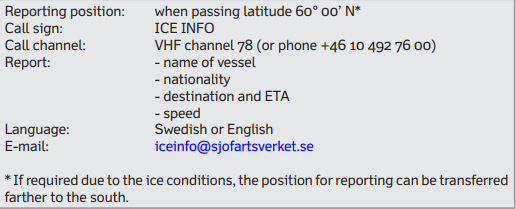The Finnish Transport Agency published instructions for winter navigation in collaboration with the industry, shipping companies, charterers, vessels, icebreakers, pilots and vessel traffic services.
Based on Finland’s maritime strategy 2014–2022, these instructions aim to ensure smooth, economically viable and internationally competitive Finnish foreign trade and domestic waterborne transport with short waiting times during the winter season.
[smlsubform prepend=”GET THE SAFETY4SEA IN YOUR INBOX!” showname=false emailtxt=”” emailholder=”Enter your email address” showsubmit=true submittxt=”Submit” jsthanks=false thankyou=”Thank you for subscribing to our mailing list”]
During winter navigation ships are facing more risks than when sailing in ice-free waters. When navigating in broken ice fields, sailing in convoy or preparing for towage, ships cannot always keep enough distance to each other. This includes an increased risk of collision between the ships involved.
Vessels in the Bay of Bothnia or Sea of Bothnia
Ships bound for Finnish or Swedish ports in the Bay of Bothnia or Sea of Bothnia in which assistance restrictions apply, must report as follows:

ICE INFO provides ships with the advance instructions of the coordinating icebreaker, or creates contact via VHF between vessels and the coordinating icebreaker.
Vessels heading to a Finnish or Swedish port in the Quark or the Bay of Bothnia must give an advance report to Bothnia VTS 20 nautical miles before Nordvalen Lighthouse (63° 32,15’ N 20° 46,60’ E) on VHF channel 67.
Bothnia VTS forwards the information it has received from the coordinating icebreaker to the vessels, such as navigational instructions, waypoints, as well as the position, name and VHF working channel of the icebreaker.
Vessels for the Gulf of Finland
Vessels of 300 GT or more sailing in the Gulf of Finland need to report to the GOFREP Traffic Centre in question.
The GOFREP Traffic Centre forwards the information from the coordinating icebreaker to the vessels.
Vessels for the Lake Saimaa area
The ship agents must send the advance information of the vessels and the vessels’ reply concerning compliance with these instructions by e-mail
to Saimaa VTS.
Sailing in ice
- A ship navigating in ice without assistance must follow the instructions given via Turku Radio, ICE INFO, VTS, GOFREP and by the icebreakers and should strive to proceed in the ice without assistance for as long as possible. The vessel is also expected to be able to navigate in thin ice in a broken ice channel without icebreaker assistance. For this reason the vessel must always have sufficient engine output.
- The vessel traffic services (VTS/GOFREP) are responsible for the vessel traffic management and information in their respective area. The icebreaker is responsible for the icebreaker assistance provided to vessels and for coordinating the traffic in an ice field. Because of this, vessels are required to simultaneously monitor both the local VTS traffic channel and the icebreaker channel.
- A vessel stuck in ice must notify the icebreaker of its position without delay.
- VTS/GOFREP informs and manages the traffic in accordance with the instructions given by the coordinating icebreaker.
See more details in the PDF below































































